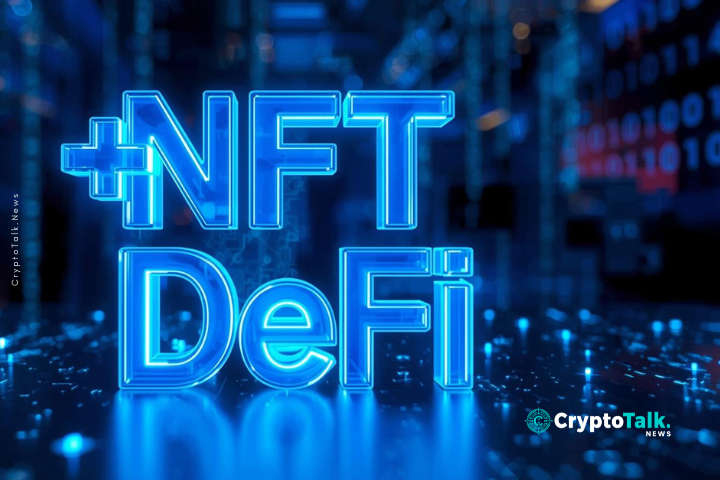Bitcoin (BTC) experienced a dip of 0.98% on May 3, 2025, after briefly recovering on May 2. The cryptocurrency closed at $95,988, down from $96,923 the day before. Although Bitcoin faced a slight pullback, it managed to maintain strong support, avoiding a drop below $95,000. This shows a resilient price level in the face of negative news.
The main driver for this dip was Arizona’s Democratic Governor, Katie Hobbs, vetoing the state’s Bitcoin reserve bill. This bill, which had been passed by the Arizona legislature, aimed to establish a Bitcoin reserve fund at the state level. Governor Hobbs explained her decision, stating, “The Arizona State Retirement System is one of the strongest in the nation because it makes sound and informed investments. Arizonians’ retirement funds are not the place for the state to try untested investments like virtual currency.”
This veto is significant, as it signals the possible resistance from some political leaders toward cryptocurrency, especially within the Democratic Party. Arizona’s veto could also stall other Bitcoin-related legislation, such as Senator Cynthia Lummis’ Bitcoin Act. The political divide over cryptocurrency regulation could affect how the U.S. handles digital assets moving forward.
Bitcoin Act Faces Challenges, but Gains Support
Despite the setback in Arizona, there is still strong pushback for broader Bitcoin adoption in the U.S. Senator Cynthia Lummis reintroduced her Bitcoin Act, a piece of legislation that proposes the U.S. government acquire one million BTC over five years. The bill is intended to address the country’s growing national debt, which now exceeds $36 trillion. Senator Lummis believes the Bitcoin Act could provide a unique solution to this financial issue.
In a statement on May 2, Lummis explained, “The Bitcoin Act is the only solution to our nation’s $36 trillion debt. I’m grateful for a forward-thinking president who not only recognizes this, but acts on it.” If successful, the Bitcoin Act could create significant demand for Bitcoin, leading to upward pressure on its price.
However, the political and ideological differences within Congress, particularly surrounding the handling of digital assets, could delay or derail this bill. The veto of Arizona’s Bitcoin reserve bill only highlights the potential roadblocks ahead for pro-crypto legislation.
Bitcoin ETFs Drive Market Activity Despite Setbacks
While Bitcoin’s price faced challenges due to Arizona’s veto, the cryptocurrency market found support in the growing Bitcoin Exchange Traded Funds (ETFs) sector. ETF flows remained strong, signaling continued interest in Bitcoin from institutional investors.
According to Farside Investors, Bitcoin ETFs saw a total net inflow of $1.8 billion during the week ending May 2, following a substantial $3 billion in the previous week. BlackRock’s iShares Bitcoin Trust (IBIT) led the charge, attracting a massive $2.48 billion in net inflows. This marks a significant contribution to the U.S. Bitcoin ETF market, highlighting BlackRock’s dominance.
Despite the strong performance of BlackRock’s Bitcoin ETF, other funds in the sector experienced outflows. The ARK 21Shares Bitcoin ETF (ARKB) saw net outflows of $457.6 million, while the Fidelity Wise Origin Bitcoin Fund (FBTC) reported outflows of $201.1 million. This divergence shows that while some Bitcoin-related funds are thriving, others are struggling to maintain investor confidence.
These mixed results come amid broader positive developments, such as an upbeat U.S. jobs report and easing trade tensions between the U.S. and China. These factors likely contributed to the strong demand for Bitcoin ETFs, which are often seen as a safer way to gain exposure to Bitcoin compared to directly buying the cryptocurrency.
Nate Geraci, president of the ETF Store, commented on the continued inflows into BlackRock’s Bitcoin ETF, stating, “Now 14 straight days of inflows for iShares Bitcoin ETF… $4+ billion total. IBIT is now in the top 10 of all ETFs by inflows this year (out of nearly 4,200 ETFs).” The success of BlackRock’s Bitcoin ETF underscores the growing importance of institutional investment in the cryptocurrency space.
BTC Price Outlook: Key Drivers to Watch
Several factors will determine Bitcoin’s price in the near future. Here are some key drivers:
-
Global Trade Risks: Trade tensions, particularly between the U.S. and China, could impact global risk sentiment, influencing Bitcoin and the broader cryptocurrency market.
-
Macroeconomic Data: Economic indicators, such as U.S. jobs data and inflation reports, will play a crucial role in shaping the Federal Reserve’s decisions on interest rates. A rate cut could be positive for Bitcoin.
-
Legislative Progress: Any movement forward on the Bitcoin Act or similar cryptocurrency legislation could boost Bitcoin demand.
-
ETF Trends: The flows into Bitcoin ETFs will remain an important signal of market sentiment. Continued inflows could support Bitcoin’s price growth.
Bullish Scenario: If trade tensions ease, the Fed hints at a rate cut, and the Bitcoin Act progresses, Bitcoin could climb toward $100,000. The ongoing ETF inflows could further propel this bullish outlook.
Bearish Scenario: On the flip side, escalating trade tensions, a hawkish Federal Reserve, or continued ETF outflows could drive Bitcoin down to around $80,000.
Technical Analysis: Bitcoin’s Path Ahead
Bitcoin’s price is currently above both the 50-day and 200-day Exponential Moving Averages (EMA), indicating bullish momentum. Traders will look for confirmation of this trend by monitoring key resistance and support levels.
-
Upside Target: A break above the recent high of $97,997 could pave the way for Bitcoin to test $100,000. A sustained move above $100,000 might even allow Bitcoin to approach its all-time high of $109,312.
-
Downside Risk: If Bitcoin falls below $95,000, the next support level lies around $90,742. Further selling pressure could test the 50-day EMA or even the $86,263 support level.
The 14-day Relative Strength Index (RSI) stands at 66.43, suggesting that Bitcoin still has room to rise before entering overbought territory (RSI above 70).
Ethereum Analysis: ETF Flows Remain Key
Ethereum (ETH) saw a slight dip in its ETF flows, with net inflows of $106.8 million in the week ending May 2, down from $157.1 million the previous week. Despite the drop, these inflows helped Ethereum bounce back to $1,873.
However, Ethereum remains in a bearish phase, trading below both its 50-day and 200-day EMAs. For Ethereum to reverse this trend, it will need to break above the 50-day EMA and test $2,000. If it moves past that, the next target would be $2,308. On the downside, a drop below $1,750 could send Ethereum toward its April 22 low of $1,538.
Bitcoin and Ethereum’s paths forward will be influenced by a variety of factors, including geopolitical risks, economic data, and legislative progress. While Arizona’s veto of the Bitcoin reserve bill dealt a blow to Bitcoin’s immediate prospects, the strong flows into Bitcoin ETFs, especially BlackRock’s, provide some much-needed optimism for the market. Investors will be closely watching these developments as they shape the future of Bitcoin and the broader cryptocurrency market.
Author
-
Tanjid Osman is a crypto journalist and writer with a keen focus on blockchain technology and digital assets. At CryptoTalk.News, he delivers in-depth market analysis, price predictions, and insights into emerging trends. Known for simplifying complex crypto topics, Tanjid empowers readers to make informed decisions in the ever-evolving digital economy.
View all posts


























